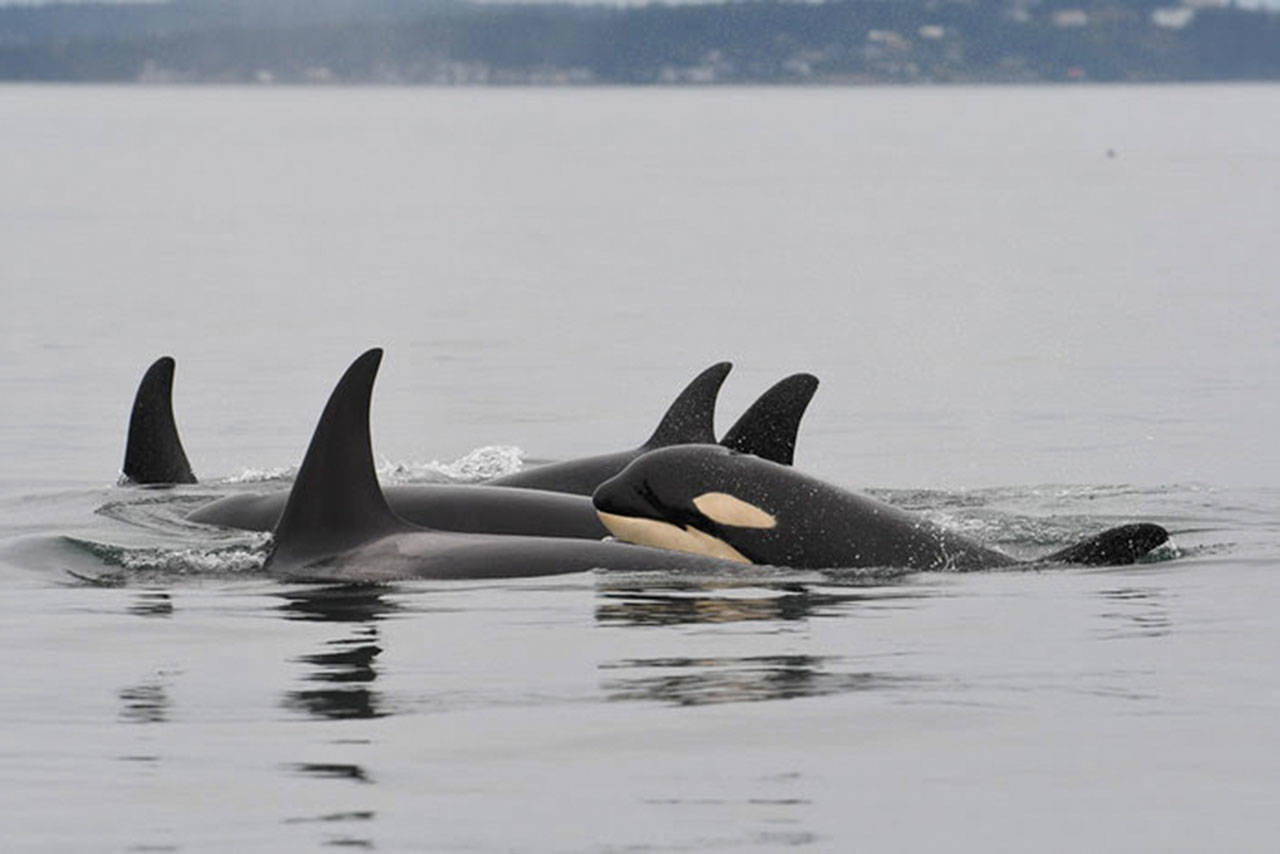forum
library
tutorial
contact

For Orcas, It's Been a
Season of Hope and Anguish
by Editorial Board
GoSkagit.com, October 2, 2018
|
the film forum library tutorial contact |

|
For Orcas, It's Been a
by Editorial Board
|
"The extinction of these orcas would be an unacceptable loss," the report finds.
 A summer of sadness - surrounding an orca whale mother who kept the body of her dead infant calf afloat for more than two weeks, and the recent apparent death of another orca, 3-year-old J50, from malnutrition and disease - has continued with recent reports from marine scientists that a K pod whale, K25, "Scoter," is thinner and swimming lethargically.
A summer of sadness - surrounding an orca whale mother who kept the body of her dead infant calf afloat for more than two weeks, and the recent apparent death of another orca, 3-year-old J50, from malnutrition and disease - has continued with recent reports from marine scientists that a K pod whale, K25, "Scoter," is thinner and swimming lethargically.
Yet there is some hope - and some anxiety - in the same report from National Oceanic and Atmospheric Administration Fisheries that at least three orcas are pregnant among the killer whales in the J, K and L pods that spend much of the year in the waters around the San Juan Islands.
Among the pregnant whales is Scoter's sister, K27, "Deadhead," who has given birth once before, but has also lost a pregnancy. In fact, there have been no successful births to any of the pods in the last three years. The Southern Residents, as the three pods are known, numbered as many as 98 whales as recently as 1995, but have since dwindled to 74, with J50's death.
There's hope and anxiety, as well, in last week's release of a draft report from Gov. Jay Inslee's orca recovery task force. The task force, which includes about 50 representatives from backgrounds including environmental, agricultural, utilities, tribes, government, fisheries and whale watch groups, has been meeting since spring to develop a raft of recommendations focused on immediate and long-term solutions to restore the health of the Northwest's orca whale populations, the salmon that they feed on and the Salish Sea itself.
Among the threats responsible for the decline of the orca population are:
Among a list of some 50 recommendations:
The heaviest lift is likely to be even a consideration of removal of the Lower Snake River dams, as they provide a significant amount of hydropower in the state and are important to eastern Washington for irrigation and transportation of agricultural goods. Yet, the dams in the Columbia Basin block access of salmon to 55 percent of the spawning and rearing habitat that the fish used before dam construction.
Most of the recommendations will have significant impacts on the state's and region's economy, recreation, transportation and state spending, which requires that residents begin studying the recommendations and providing comment. Public comment will be accepted as development of the plan continues through mid-November, but feedback on the draft plan now is being accepted until Sunday.
It's common in reports such as this to see an option listed as "no action."
Such recommendations are not included in the study: "Inaction is not an option," the report states, if a healthy and sustainable Southern Resident orca population is to be secured.
The report sets a goal of increasing the J, K and L pods' population by 10 whales over the next decade.
As shown by the attention that followed Talequah, the mother who kept her dead calf afloat for days; and Scarlet, the young malnourished orca that died earlier this month, the orcas themselves are valued by state residents, visitors and particularly by the state's tribal communities.
But the orcas, which occupy a top position in the Salish Sea's food web, are also an indicator of the health of the salmon on which they feed and the ecosystem of the sea itself. The loss of more orcas and a continuation of their decline can only be seen as the beginning of a collapse that could become increasing difficult and expensive to reverse.
"The extinction of these orcas would be an unacceptable loss," the report finds.
And it would represent an abject failure of our stewardship of Puget Sound and the Salish Sea.
learn more on topics covered in the film
see the video
read the script
learn the songs
discussion forum
